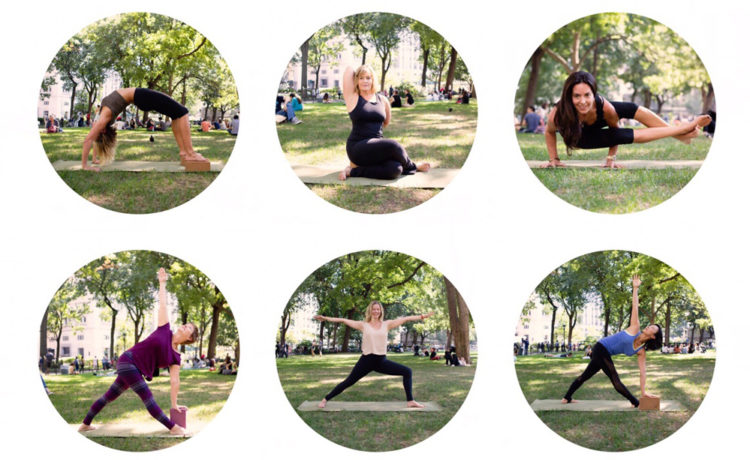
The Power of Vulnerability
By YSNY Teachers, October, 2016
Boo! This October, we’re inquiring into what scares you? What makes you feel vulnerable?
Although we may not like the feeling of being exposed for having weaknesses, it is often the cracks of vulnerability that allow others to fall in love with us. Perhaps strengths and weaknesses, courage and vulnerability are all entwined in the very core of our humanity.
Lena Dunham says, “It’s interesting how we often can’t see the ways in which we are being strong – like, you can’t be aware of what you’re doing that’s tough and brave at the time that you’re doing it because if you knew that it was brave, then you’d be scared.”
To expose some raw flaws (and inspire you to do the same), we’ve asked our teachers to share some lessons from their least favorite poses.
Maggan Daileader has some awesome insights into how to approach your most difficult postures. “Gomukhasana and I have never been friends, but I hope to be one day. In researching the pose, I found that 85%+ of write-ups concentrate on stubborn shoulders. Since this is not my problem, I had to dig a bit further to figure out why my legs and hips won’t cooperate to my ego’s content.
“Short answer: I have trouble with a simultaneous adduction and external rotation of the legs; sitting on a block alleviates some of this difficulty.
“Long answer: What is the actual pose? In most all cases the pictures of this pose shows a person sitting on the floor with knees stacked and the ankles on either side of the opposite thigh with the toes pointing out to the sides or even forwards. However, in Light on Yoga, Iyengar demonstrates the pose by sitting on his bottom ankle thereby lifting his seat (much like what is accomplished by using a block) and pointing his toes toward the back. With respect to the arms, many pictures demonstrate a matching top leg and lifted top arm, but there are plenty of examples of having the opposite arm lifted from the leg that rests on top. In LoY, Iyengar demonstrates using the opposite arm on top from the leg that rests on top of the other. Finally, this pose has often been demonstrated to me with a forward bend, however in LoY the instruction is to remain upright. There are typically many ways to vary one pose in order to illuminate different elements of the pose. However, for me, gomukhasana was another example of where:
- I was trying to “follow” what I had seen rather than researching why it was so difficult;
- I didn’t ask whether what I “saw” was really the intended pose to begin with; and
- I didn’t investigate if there variations of the pose that may have been more accessible.
“Gomukhasana now serves as a good reminder to myself for all three of these blind spots.”
Chrissy Carter says, “Believe it or not, the hardest pose for me is Virabhadrasana 2. It’s a relatively simple posture in comparison to so many others, but if there’s one thing that yoga has taught me it’s that just because something is simple doesn’t mean it’s easy. I suspect there’s a structural source to my difficulty in this pose — something skeletal in my hip joints which makes the combination of external rotation, flexion, and abduction challenging for my body. But there are functional obstacles as well, namely weak abductors and external rotators and tiiiiiiiiight inner thighs. Like any challenge, Virabhadrasana 2 has taught me a lot, and like any devoted practice, it has revealed more and more of my own personal truth. I now practice this pose in a way that gives me a chance to perceive the big picture. I don’t bent my front knee to 90 degrees; I try to focus more on pulling up than on how far I can go down. I’m diligent about my back leg — that it doesn’t collapse into gravity or cave into the efforts of my front leg. All in all, I’m still not a big fan of Vira 2 but I’m learning to accept what is and work honestly what what I can do. Besides, that’s what the practice is really about.”
Terri Walker says, “My behemoth pose is Parivrtta Trikonasana. The lesson I learn from it every time I do it, is practice it more. This is the pose that telescopes every bind in my body and mind. I must take Parivrtta Trikonasana’s power into myself and not resist it’s teachings. Stand firm in my feet, be long in my “still “ walking-posed legs and tap into the potential energy there. Find balance in my hips, change directions in my torso, soar with my arms, look up with my gaze. Smile! Love myself more, accept the moment, and resist looking for physical, mental, and emotional scapegoats.”
Julie Ross says, “When I practice difficult poses I realize that I am over-working areas that are already strong and underutilizing muscles that are weak or tight. I’ve also noticed that I have my own mental resistance at play. Alas, I have to make peace with the poses that are troublesome to me instead of letting them frustrate me. Sometimes, these difficult poses are just what my body needs to address my physical imbalances. The poses that are the most irksome, can be our greatest teachers. I can’t avoid them, I just need to work through the difficulty, which in turn, builds my confidence. I parlay this nugget of wisdom from the mat into the real world. For me, yoga is a means by which I try to befriend myself and come to a place of self-acceptance, instead of trying to control outcomes to perfection. It’s empowering!”
Now, we want you to join the inquiry! Let your teachers know your least favorite poses, and see what insights they might have for you. Follow us on Instagram to catch your favorite Shanti teachers in their least favorite poses, and little mini Shanti Sequences they do to help them prepare. Share a photo of your least favorite pose with the #AsanaNemesis, and you enter to win a free private lesson at YSNY to help you work on your asana nemesis. The winner will be announced on Halloween.

